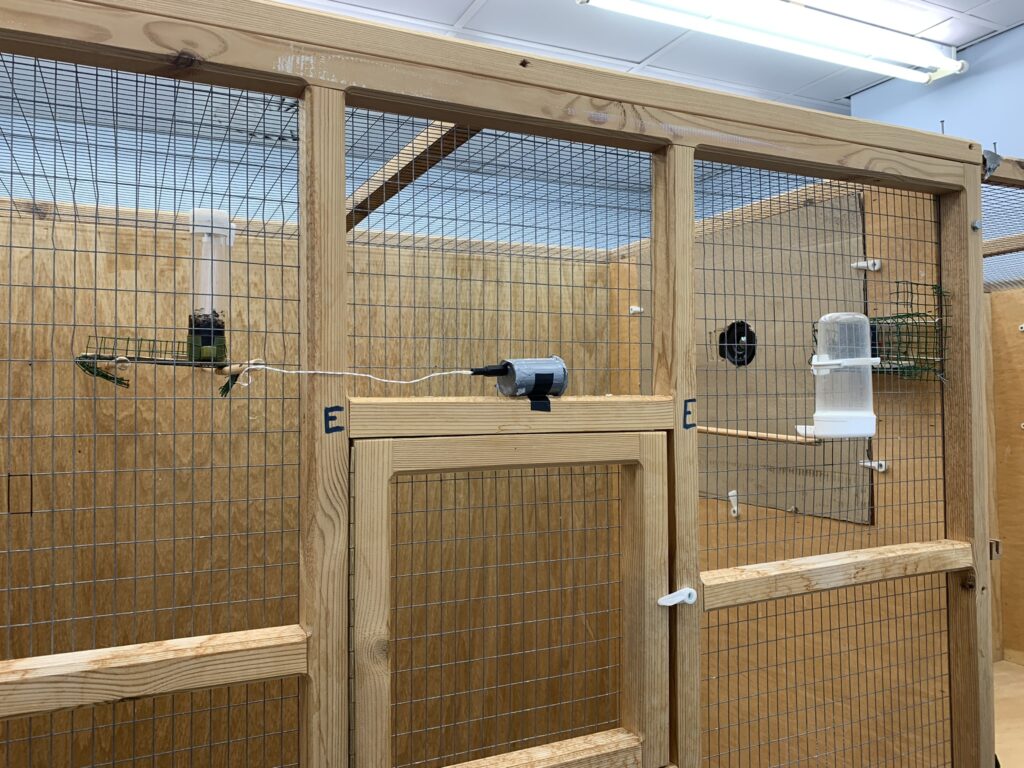Testing was carried out using 24 adult Gouldian finches, that were kept in an aviary at Liverpool John Moores University, England. These 24 individuals were comprised of black-headed morphs and red-headed morphs that were split into two types of pairs:
- Same colour pairs (red-head paired with a red-head and black-head paired with a black-head)
- Mixed colour pairs (red-head paired with a black-head)

A feeding apparatus was in placed in the experiment cages, designed by placing two feeders next to each and attaching them at the top. This apparatus was placed approximately 95cm opposite the side of where the thermal camera was placed. This was to ensure that the side profile of the bird would be in the field of view of the thermal camera.

Thermal cameras were used to record the surface temperature around the eye region of the bird. This temperature was used as a measurement of stress, with lower surface temperatures indicating a higher stress response.
GoPro cameras were also used to record the birds’ vigilance and this was measured through the number of horizonal head movements that were made, with a higher number of head movements indicating higher level of vigilance. Each recording session, both video and thermal, were 45 minutes long.
The pairs were then exposed to three different situations: New, familiar and neophobic.
When the birds were first introduced to the experiment cages, recording began immediately, this was the ‘new‘ situation. The birds were then left in the cage for five days to allow for habitation to their environment before recording began again on the sixth day – ‘familiar‘ situation. On the seventh day, all feeding apparatuses were removed from the cages an hour prior to the introduction of the novel object. This was to stimulate appetite and to encourage the birds to approach the novel object – ‘neophobic‘ situation.
The novel object in this case was brown pipe cleaner that was placed on top of the feeding apparatus.

During the neophobic situation, the time (seconds) it took to approach, be within reach (approximately body length width) and fed from the feeding apparatus was also measured.